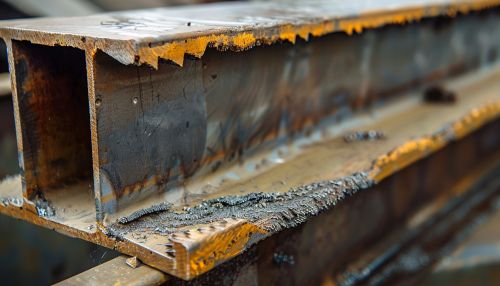Shear stress
Introduction
Shear stress is a specific type of stress that occurs when parallel forces act in opposite directions, causing deformation of a material. It is an important concept in the fields of mechanical engineering, civil engineering, structural engineering, and materials science, among others.
Definition
Shear stress, denoted by the Greek letter tau (τ), is defined as the force (F) acting parallel to the surface area (A) divided by the area over which it acts. Mathematically, it is expressed as:
τ = F/A
This equation illustrates that shear stress is directly proportional to the force applied and inversely proportional to the area over which it is distributed.
Types of Shear Stress
Shear stress can be classified into three main types: simple shear stress, pure shear stress, and complex shear stress.
Simple Shear Stress
Simple shear stress occurs when a force is applied tangentially to a surface. This is the most common type of shear stress and is often seen in beam bending and torsion scenarios.
Pure Shear Stress
Pure shear stress, also known as equal and opposite shear stress, occurs when equal and opposite forces are applied to a material, causing it to change shape without changing volume. This type of shear stress is common in geological phenomena such as rock deformation.
Complex Shear Stress
Complex shear stress is a combination of simple and pure shear stress. It occurs when a material is subjected to different magnitudes and directions of forces, resulting in a complex state of stress.
Measurement of Shear Stress
Shear stress is typically measured using strain gauges, which are devices that change their electrical resistance in response to mechanical deformation. The measurement of shear stress is crucial in many engineering applications to ensure the structural integrity of materials and components.
Effects of Shear Stress
When a material is subjected to shear stress, it undergoes a deformation known as shear strain. This deformation is characterized by a change in shape without a change in volume. The relationship between shear stress and shear strain is governed by the material's shear modulus, a fundamental property that describes its resistance to shear deformation.
Shear Stress in Fluids
In fluid dynamics, shear stress is a critical parameter. It is responsible for the drag force experienced by objects moving through a fluid and plays a significant role in the flow behavior of fluids. The study of shear stress in fluids is a key aspect of fluid mechanics and hydrodynamics.
Shear Stress in Solids
In solid mechanics, shear stress is a vital factor in determining the strength and deformation characteristics of materials. It is particularly important in the design and analysis of structures such as beams, columns, and shafts.
Applications of Shear Stress
Shear stress has numerous applications in various fields. In civil and structural engineering, it is used in the design of buildings, bridges, and other structures. In mechanical engineering, it is used in the design of machinery and equipment. In materials science, it is used to understand and predict the behavior of materials under different loading conditions.
See Also


